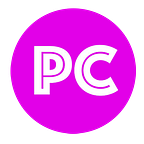Dave Boyce: Do Things That Don’t Scale, Then Do Things That Scale.
Product-Led Growth practice lead, Dave Boyce describes the distinction between finding product-market fit (PMF) versus finding go-to-market fit (GTMF).
By Tremis Skeete, for Product Coalition
Getting the product right and ready before launch is critical for digital product businesses. To make this happen, believe it or not, requires that businesses learn from consumers, because it’s the most economical way to find out whether the products can sell and meet consumer demand.
Learning from consumers sounds like the easy part — but how do you know what to engage consumers with? Even if you did know what to show consumers, when would be the right time to do it?
Since the idea is to find out if consumers would like your product, then how much time and investment do you want to put into the product itself, before you show it to consumers?
It’s quite a lot of think about, especially for startups that are on limited time with a limited budget. How would you know when to talk to consumers about your product, while at the same time, wanting to keep your production and operating costs low?
PLG practice lead Dave Boyce, has an answer that could help.
In his LinkedIn post, Dave talks about two approaches product businesses can use, so they can perform their product development and testing activities with confidence:
Do things that don’t scale, then do things that scale.
This concept reportedly was made popular by Y Combinator cofounder, Paul Graham. One of the reasons this advice is so popular, is that it encourages startup founders and their teams to get in front of prospects with their product ideas, as a way to build a consumer base.
When I say “product ideas”, there’s a reason for that. By firstly building things that don’t scale, the objective is to build just enough of your core idea, as fast and as cheaply as possible, in order to test the idea with potential customers. By doing this, you’re not only trying to get a sense of whether your product can sell. You also get to learn as early as possible, how you can improve upon the idea, before you invest large amounts of money on building a fully mature version of the product.
What makes this idea even more impactful, is that it can quickly determine which startups are destined to succeed, and the startups that fail. Paul explains it pretty well in his blog post by saying:
The most common unscalable thing founders have to do at the start is to recruit users manually. Nearly all startups have to. You can’t wait for users to come to you. You have to go out and get them.
There are two reasons founders resist going out and recruiting users individually. One is a combination of shyness and laziness. They’d rather sit at home writing code than go out and talk to a bunch of strangers and probably be rejected by most of them. But for a startup to succeed, at least one founder (usually the CEO) will have to spend a lot of time on sales and marketing.
The other reason founders ignore this path is that the absolute numbers seem so small at first. This can’t be how the big, famous startups got started, they think. The mistake they make is to underestimate the power of compound growth. We encourage every startup to measure their progress by weekly growth rate. If you have 100 users, you need to get 10 more next week to grow 10% a week. And while 110 may not seem much better than 100, if you keep growing at 10% a week you’ll be surprised how big the numbers get. After a year you’ll have 14,000 users, and after 2 years you’ll have 2 million.
Businesses seeking smarter ways to bring the right services to market, realize it’s a source of great differentiation and success. Perhaps with this LinkedIn post, Dave hopes that more startups get the message that how and when you build the product, is just as important as the product itself.
Read a copy of Dave’s LinkedIn post below to learn more:
“Do things that don’t scale.”
-Paul Graham
Yes.
When you are starting from scratch.
Looking for PMF.
Like at Y-Combinator.
The incubator that Paul Graham founded.
And then… once you’ve found PMF (product-market fit), and you are looking for GTMF (go-to-market fit):
“Do things that scale.”
Would-be entrepreneurs sometimes get these mixed up:
❌ They spend too much time during PMF stage working on scalability (like infrastructure, polish, mechanics, robustness) instead of getting out there with the customers, prototyping, testing, talking, trying, interviewing, mechanical turking…
❌ They spend too much money during scale phase, focused on “growth at all costs” instead of testing, optimizing, architecting, tuning…
So…
✅ Do things that DON’T scale during PMF phase,
✅ Do things that DO scale during GTMF phase.
Keep that straight and you’ll save a lot of headache.
